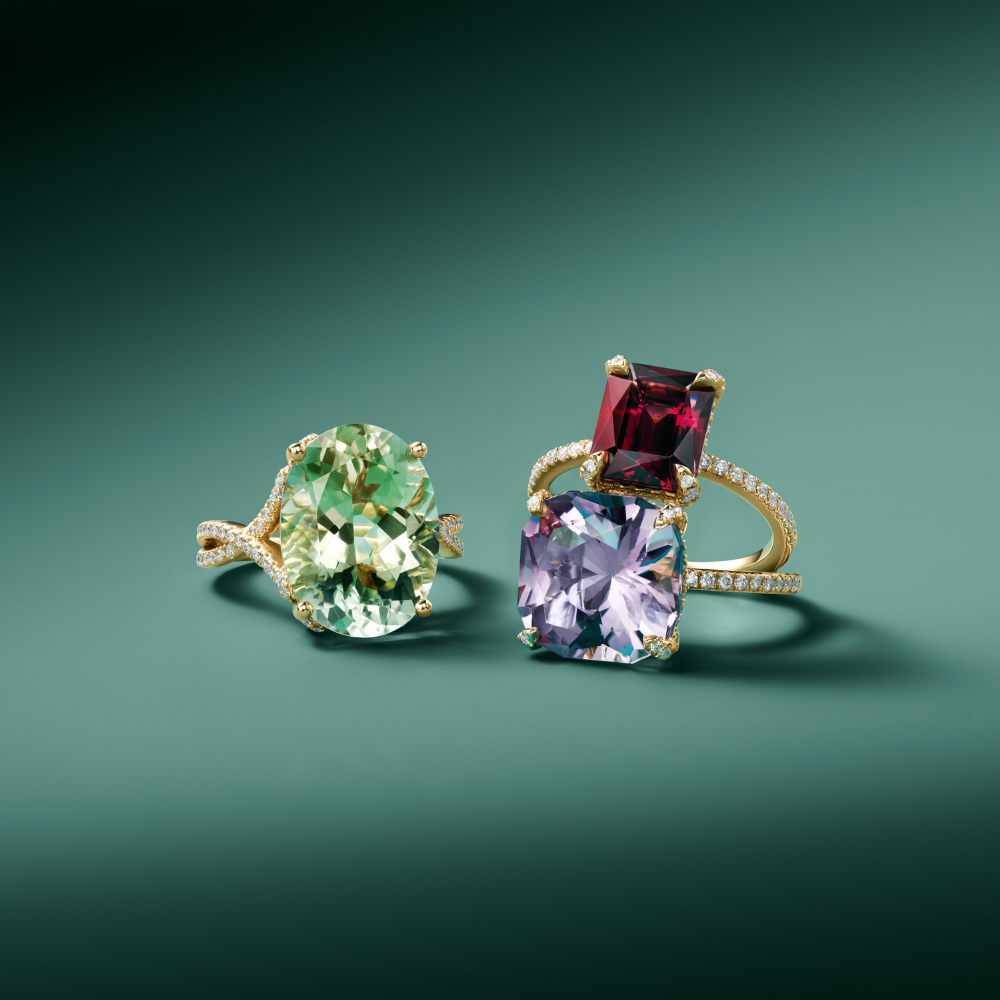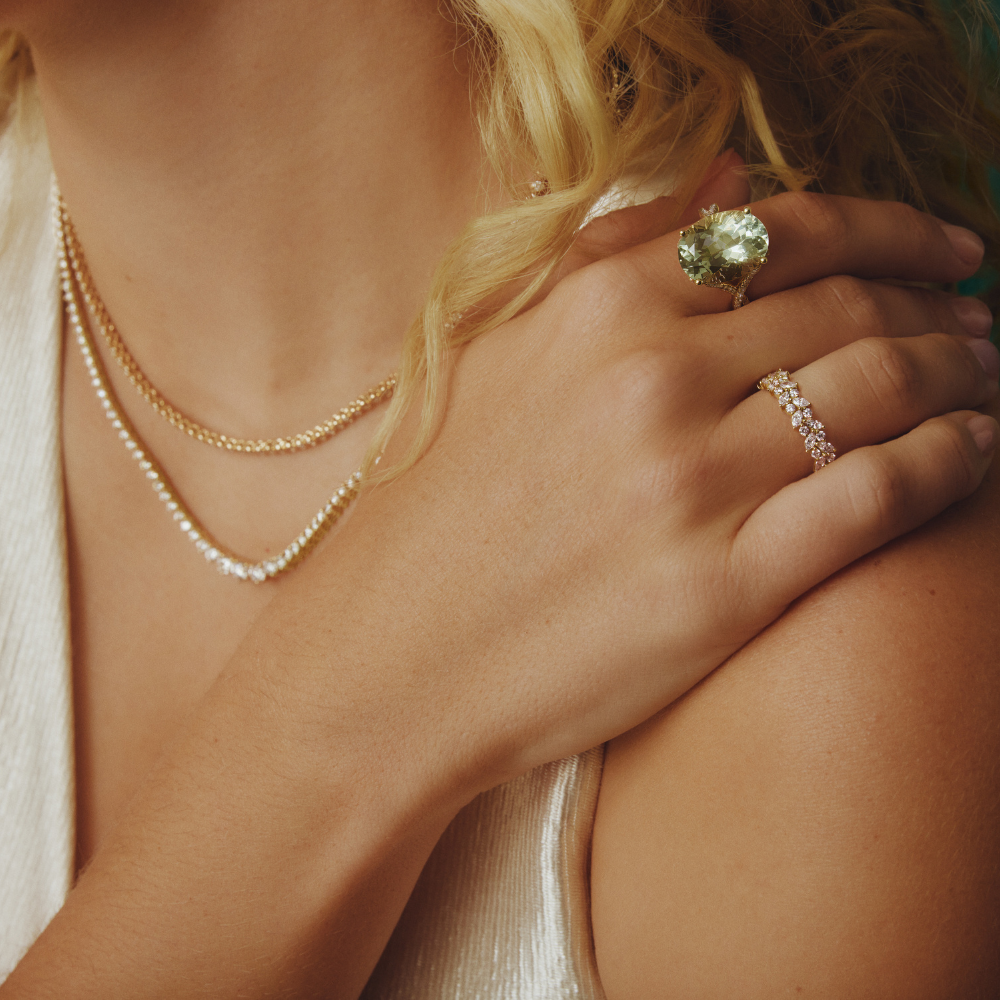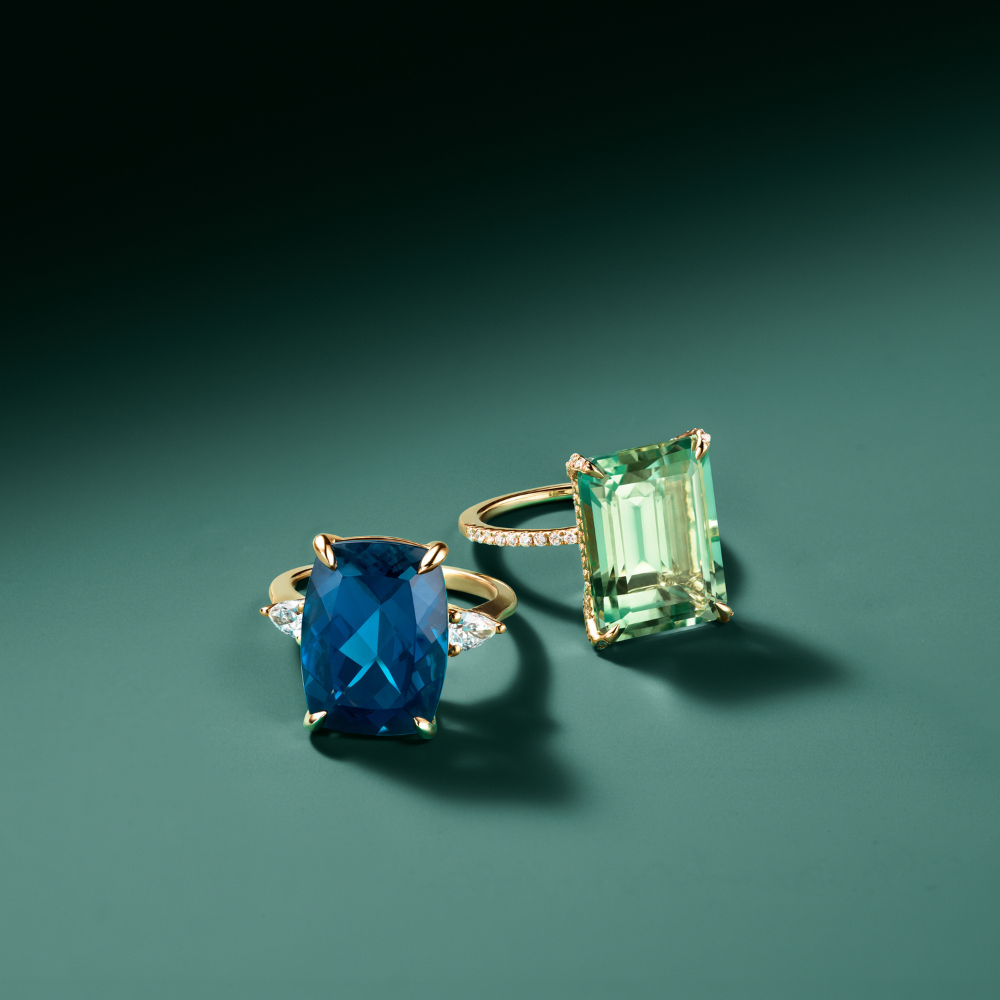A cocktail ring is a bold, often oversized ring worn as a statement accessory. Known for its eye-catching design, a cocktail ring often features a large center gemstone, or an array of smaller stones arranged in intricate patterns.
In this guide, we’ll explore everything you need to know about cocktail rings—from their distinctive characteristics and historical roots to the difference between cocktail rings and other statement jewelry.
Cocktail Ring History
Cocktail rings emerged in the 1920s during the Prohibition era in the United States. These rings became symbols of rebellion, as women wore them to secret gatherings and cocktail parties. The extravagant style of cocktail rings was a deliberate choice to draw attention in social settings, representing a sense of freedom. The popularity of cocktail rings has continued, adapting to modern trends while still embodying their historic roots as symbols of boldness and individuality.
Cocktail Ring Meaning
The meaning of a cocktail ring goes beyond its aesthetic appeal. Historically, cocktail rings symbolized independence, confidence, and style, particularly for women who wore them as expressions of personal empowerment. Over time, the cocktail ring has maintained its association with sophistication and luxury, representing the wearer’s flair for fashion and the desire to stand out. Today, cocktail rings are popular choices for events, parties, and other celebratory gatherings, as they provide an elegant finishing touch to formal attire.
Cocktail Ring Characteristics
Cocktail rings are characterized by their size, design, and materials. Here are some key features:
- Size: Cocktail rings are generally larger than traditional rings. They can cover a significant portion of the finger, often measuring one inch or more in diameter.
- Center Stone: The focal point of most cocktail rings is a prominent gemstone or an ornate setting. Gemstones like amethyst, citrine, topaz, or other colored stones are popular choices.
- Settings: These rings commonly feature bezel, prong, or pavé settings that hold the gemstones securely while showcasing their beauty.
- Materials: Cocktail rings may use a variety of metals, from gold and platinum to silver and even mixed metals, enhancing their versatility and appeal.
- Designs: Elaborate and often vintage-inspired, designs can include floral motifs, geometric patterns, or abstract shapes.
Cocktail Rings vs. Statement Rings
While cocktail rings and statement rings may seem similar, there are distinct differences between the two. Cocktail rings are specifically designed to be worn at social gatherings, often featuring a single, prominent gemstone or a luxurious, intricate design meant for evening wear. Statement rings, on the other hand, can be worn more casually and include a broader range of styles and sizes. Essentially, all cocktail rings are statement rings, but not all statement rings qualify as cocktail rings due to this emphasis on specific designs and materials.
Cocktail Rings vs. Engagement Rings
Cocktail rings and engagement rings differ significantly in their symbolism, design, and usage. Engagement rings are traditionally worn to symbolize a promise of marriage, with designs focused on a classic, timeless appeal, often featuring diamonds or gemstones in solitaire or simple settings. Cocktail rings, however, are fashion-forward pieces with no symbolic meaning tied to relationships. They are purely decorative and are often designed with more flamboyant gemstones, colors, and settings. Cocktail rings can be worn on any occasion, whereas engagement rings are typically worn daily on the left ring finger.
Cocktail Ring FAQ
Why is it called a cocktail ring?
The term “cocktail ring” originated in the 1920s and 1930s, when women would wear these rings to cocktail parties. During the Prohibition era, cocktail parties were clandestine gatherings where people would socialize and drink illegally. Wearing a bold ring to such events was a subtle act of defiance, and over time, these rings became known as “cocktail rings.”
What finger do you wear a cocktail ring on?
Traditionally, cocktail rings are worn on the right hand, typically on the ring finger or middle finger. However, many people wear cocktail rings on whichever finger feels comfortable, as the choice of finger can also depend on the ring’s size and design.







